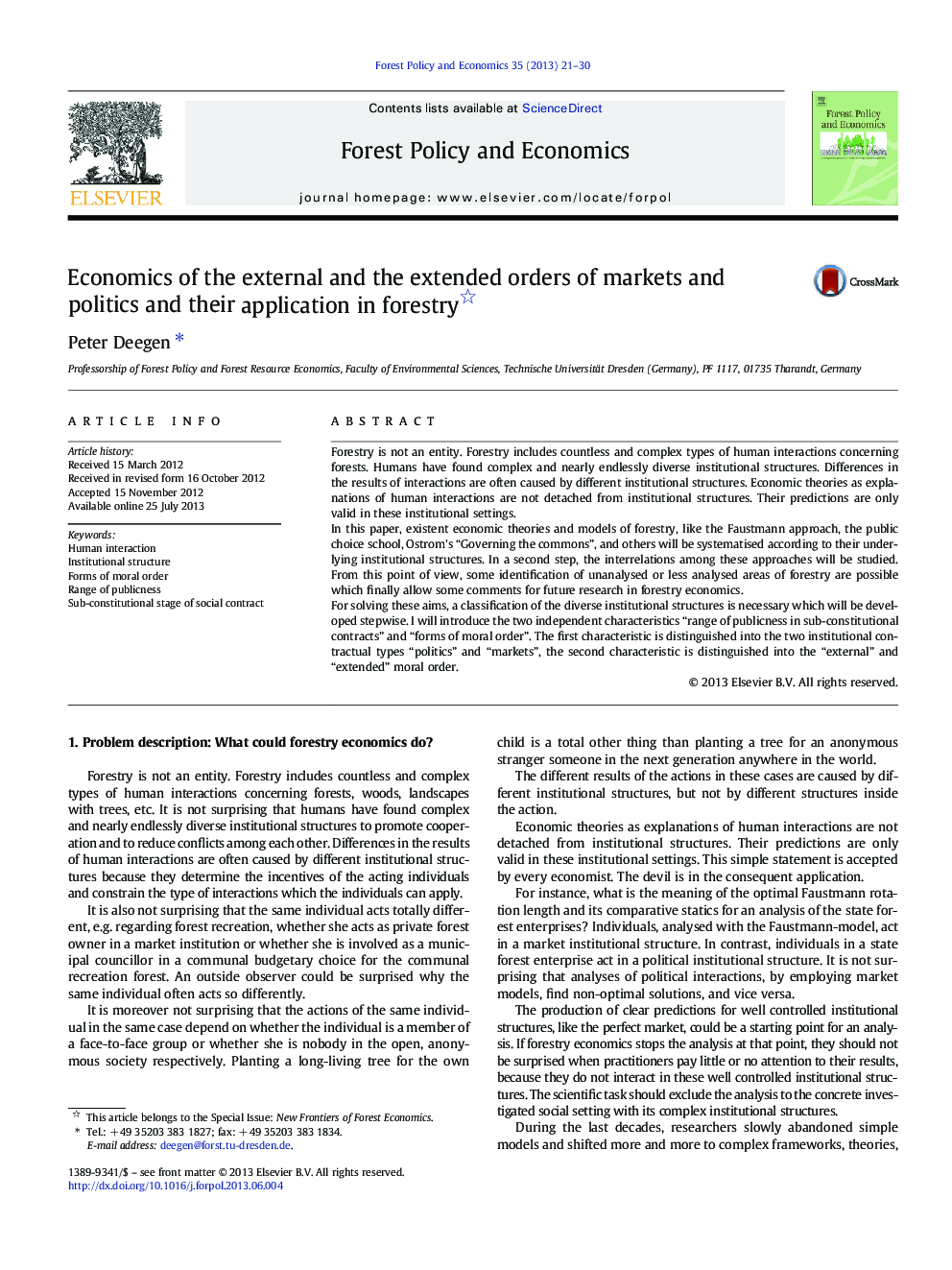| Article ID | Journal | Published Year | Pages | File Type |
|---|---|---|---|---|
| 91084 | Forest Policy and Economics | 2013 | 10 Pages |
•A classification of the institutional structures is developed.•With help of the classification the schools of forestry economics are systematised.•The results of economic theories are limited by their institutional structures.•The classification enables to find out possible fields of future research.•New models for human interactions are combinations of the two forms of moral order.
Forestry is not an entity. Forestry includes countless and complex types of human interactions concerning forests. Humans have found complex and nearly endlessly diverse institutional structures. Differences in the results of interactions are often caused by different institutional structures. Economic theories as explanations of human interactions are not detached from institutional structures. Their predictions are only valid in these institutional settings.In this paper, existent economic theories and models of forestry, like the Faustmann approach, the public choice school, Ostrom's “Governing the commons”, and others will be systematised according to their underlying institutional structures. In a second step, the interrelations among these approaches will be studied. From this point of view, some identification of unanalysed or less analysed areas of forestry are possible which finally allow some comments for future research in forestry economics.For solving these aims, a classification of the diverse institutional structures is necessary which will be developed stepwise. I will introduce the two independent characteristics “range of publicness in sub-constitutional contracts” and “forms of moral order”. The first characteristic is distinguished into the two institutional contractual types “politics” and “markets”, the second characteristic is distinguished into the “external” and “extended” moral order.
